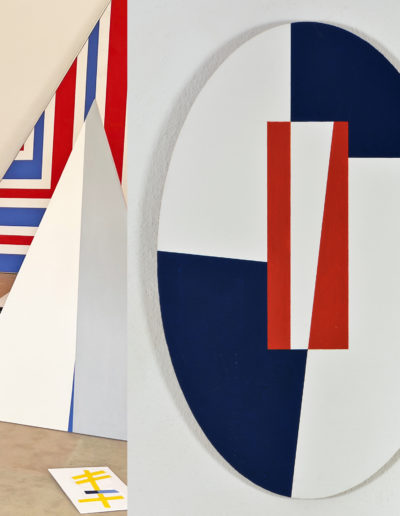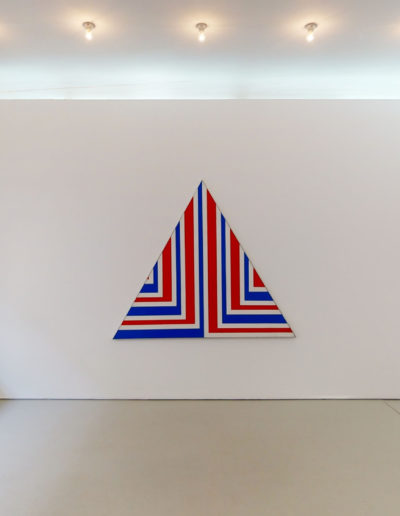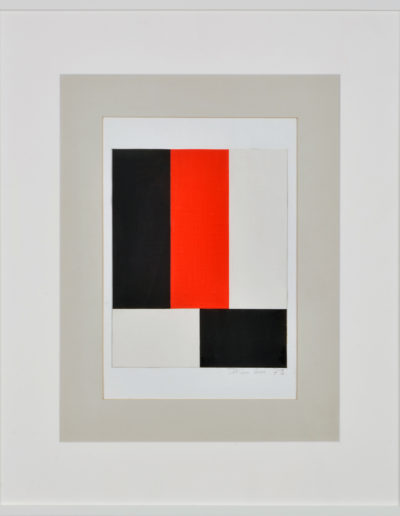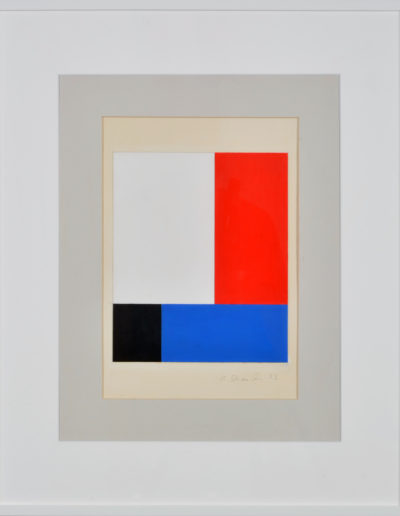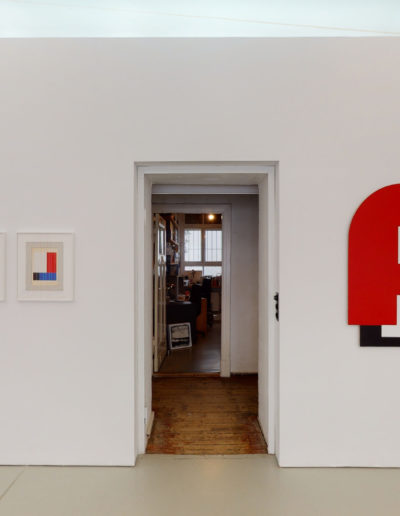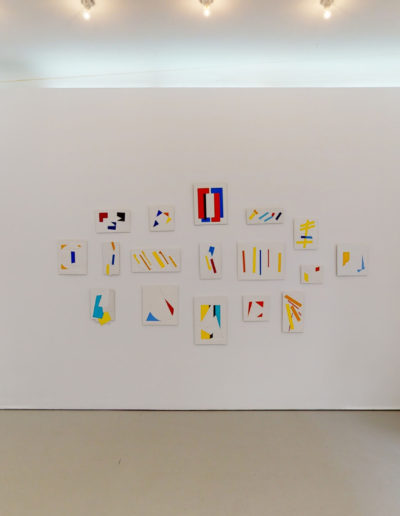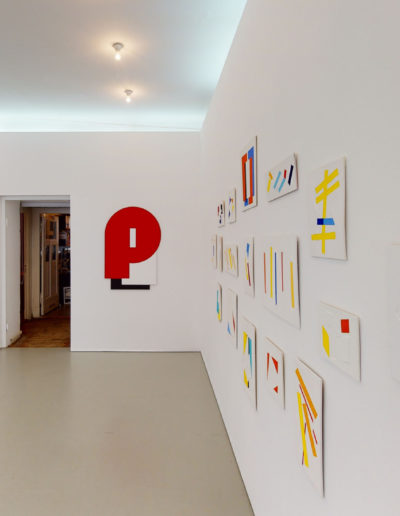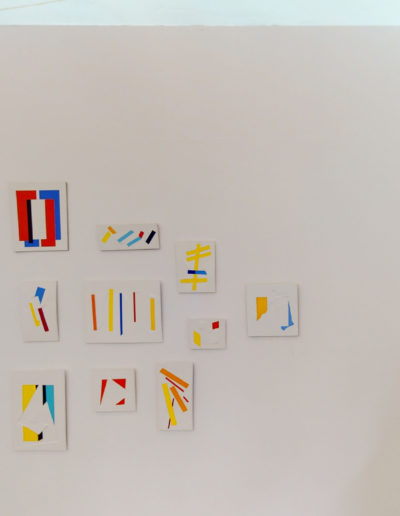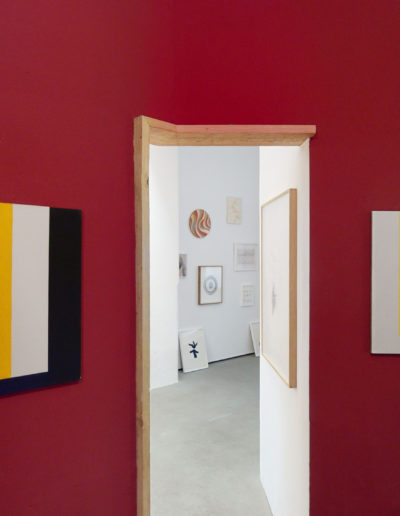View into the exhibition with framed graphic works (left) and a painting from 1994; Photo: Artland (Sarah Kivi)
View into the exhibition with works from 1992 (right side) and 1994 (left side9 and more recent ones from the last years; Photo: Artland (Sarah Kivi)
Blick in die Ausstellung; Foto: Artland (Sarah Kivi); ebenso 3d visit möglich: siehe unter ‘specials’
View into the exhibition with works from 1992 (right side) and from the recent years (left, the 'cluster installation'); photo: Artland (Sarah Kivi)
Klaus Steinmann – Small Review
Breaking up the plane
June 11 – July 16, 2022
The artist said goodbye long ago to the geometric austerity of his earlier, often large-format works. Concrete Art, which underwent bitter disputes over direction from the 1950s to the late 1980s, was not unimportant for the artist, but it was not the be-all and end-all either and had to open up over the decades.
For Klaus Steinmann, however, American colour field painting and Minimal Art were also important.
Steinmann’s current solo exhibition brings together examples from the early seventies to the nineties in combination with his small-format work in the new millennium and works fresh from the studio.
A large and imposing picture dominates the entire exhibition space with its reduction into red, white and blue stripes, serially staggered as wide lines following a right angle. The centre line of the unusual and large triangular format (173 cm high, 202 cm wide) is also the mirror axis. The artist recently fittingly named the work, untitled for decades , Tricolore. However, it also has at least the colours of the national flags of the United Kingdom and the United States. The delay has made this possible, which for better or for worse permits a new, fresh (and rigorous) view. With the consequence that what was previously less appreciated suddenly takes on a new quality, that the viewer as the originator suddenly understands it (anew), but also vice versa, and that the previous ‘gods’ can be knocked off their thrones.
In recent years, the artist has concentrated mainly on smaller formats. This enables him to work daily in his studio flat in Berlin or Walsrode on the recurring themes of geometry, the basic shapes of rectangle, triangle and circle. And this takes place in the highly charged context of his experience from the heyday of Concrete Art and the overcoming of its strict regimentation. Tongue-in-cheek, he subverts this spirit of austerity so as to continue to grow and explore new possibilities and their bounds.
By sawing open the small-format plywood panel, following the outline of the painted forms, he deliberately tilts it forward from the plane of the canvas, tilting the matching half back. This creates an intriguing interplay of foreground and background and allows another added factor in his painting, shade, to break up the strict geometry of the painted forms and breathe a delicate modulation into them.
With their support, paint and relief-like structures, the paintings thus acquire the tactile quality so typical of Steinmann.
It is time for Steinmann’s work to be reappraised on the art market, after a long break in viewing opportunities caused by the closure of his Walzinger Gallery in Saarlouis that had represented him for many years. Only through the intervention of long-standing colleague and friend Ursula Sax did the tide begin to tentatively turn in 2016. His Encounterexhibition with Colin Ardley on my premises in 2016 and the solo exhibition Bildtafel – Tafelbild of 2019 were able to break the silence. There is still a lot of communication to be done. His oeuvre, on the other hand, is substantial, although many of his early large formats were destroyed by the artist himself due to lack of space.
Semjon H. N. Semjon, June 2022
